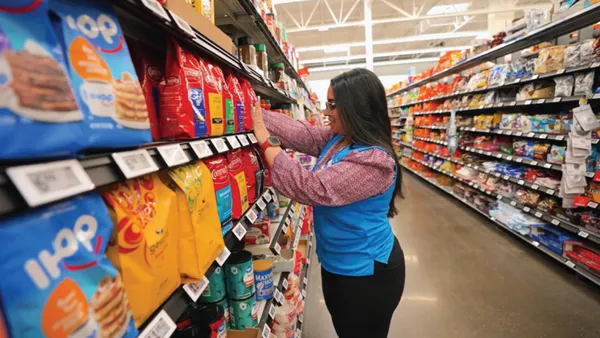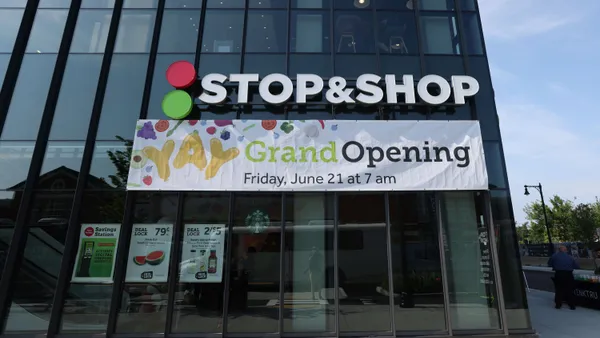Dive Brief:
- Full Harvest, a marketplace for excess or imperfect produce that would otherwise go to waste, has raised $8.5 million in Series A funding. Spark Capital led the round.
- The company, which is based in San Francisco, aims to reduce food waste, particularly the 20 billion pounds of produce wasted each year, often due to cosmetic reasons. To date, Full Harvest has helped farmers sell and deliver almost 7 million pounds of produce.
- “We need to move beyond the archaic nature of buying and selling produce to get the most from each harvest and make sure no food goes to waste," Christine Moseley, founder and CEO of Full Harvest, said in a statement. "Our marketplace will drive a waste-free future on produce farms that benefits growers, food and beverage companies, and consumers.”
Dive Insight:
The excess produce market (also termed “ugly,” “imperfect,” or “misfit” produce throughout the food industry) has become a busy space. In addition to Full Harvest, other produce startups include GroGreen, which connects farmers with restaurants; Imperfect Produce, a direct-to-consumer service that partners with Whole Foods; and Hungry Harvest, another direct-to-consumer service. Most of these companies are on a mission to reduce food waste.
Full Harvest stands out because it is a business-to-business company with an established network of partnerships and a proven system of working with farmers to get produce to food and beverage producers. There is no question that the company is functioning well and delivering results, as demonstrated in its ability to secure this funding.
Several grocers have gotten into the imperfect produce game over the past few years, too. Walmart not only sells imperfect or excess produce in some of its stores, but also uses it behind-the-scenes in some of its pre-packaged food items, such as frozen fruit or pre-made pies. Grocery Outlet has been selling imperfect produce since 1946 at a fraction of the cost. Other grocers with imperfect produce programs include Hannaford, Hy-Vee, Giant Eagle and H-E-B, which sells its flawed produce under the name “inner beauties.”
It would make sense for Full Harvest to partner with grocery stores in the future, especially for grocers that turn out high volumes of freshly prepared convenience foods or have smoothie bars, sandwich and salad bars.
While Full Harvest does not sell directly to consumers at this point, this may be a future revenue stream. Many customers will be willing to buy directly from a company like Full Harvest, especially those who subscribe to CSA boxes, meal prep kits or other similar services. Some shoppers will purchase imperfect produce because they’re motivated to reduce waste and do something altruistic, while others will remain focused on price – which, at a deep discount, makes cosmetically flawed produce more attractive.
One of the big challenges for companies that deal with distributing excess produce is that they may not be able to scale or expand enough to serve communities that need it most, particularly some of the food deserts around the U.S. where any produce is hard to get. So, despite the noble mission to reduce food waste, is there a way to connect that mission to serving areas with greater need?
It is difficult to gauge just how much imperfect produce programs and companies can reduce the amount of food wasted in the U.S. While they have their own statistics to go by, the excess produce market is young, and it is unclear whether these companies are cutting food waste completely, or simply diverting it.













